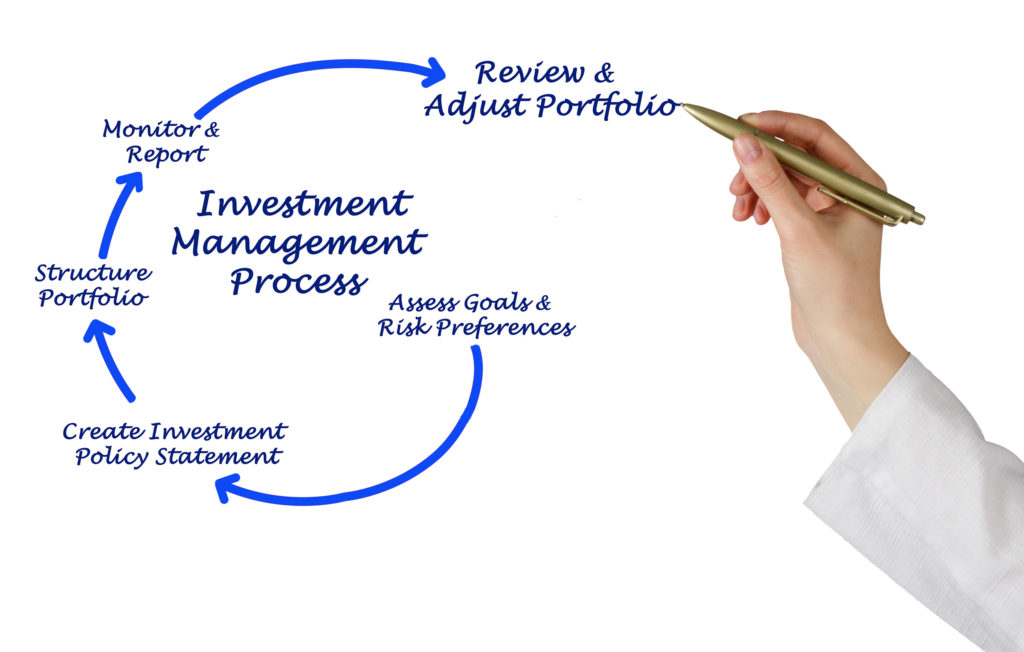
As a do-it-yourself (DIY) investor, you take complete responsibility for making investing decisions and for carrying them out. Since investing decisions are often made during periods of volatility in the stock market, DIY investors benefit greatly from having a Personal Investment Policy (PIP) Statement to guide them when the going gets tough. My PIP Statement fills the role that was previously provided by my financial advisor.
The PIP Statement documents the following items: your current financial situation; your financial goals; and how you plan to get there. I promise you that a well-crafted PIP Statement will reap rewards that far exceed the level of effort needed to develop the document. So let’s get started!
The Five Planning Steps
The five steps to develop a PIP Statement are:
- Assess your current situation;
- Document your long-term goals;
- Assess your risk tolerance;
- Develop your financial plan; and
- Monitor your financial plan.
Let’s look at the five steps in order to get a better feel for what should be in the document.
Assess Your Current Situation
The first step is to assess your current financial position. This is done by constructing a personal balance sheet. I have been doing this for over 35 years now to ensure that I am going in the right direction. When I was younger, I updated my balance sheet on an annual basis, but now I do this every three months as my dividend income is much higher. So what is in a personal balance sheet?
The assets portion of your balance sheet includes the values of the following items: cash in your banking accounts, financial securities you own, such as GIC’s, treasury bills, bonds and stocks, your defined-benefit pension (if applicable), real estate holdings and any business interests. The sum of these items represents your total assets.
The liabilities portion of your balance sheet includes the values of the following items: any student loans, car loans, personal loans, lines of credit, credit card balances and mortgages. The sum of these items represents your total liabilities.
Your net worth is simply the difference between your total assets and your total liabilities.
Although your net worth is a meaningful value, I encourage everyone to maintain a stoic mindset because it only represents the value at an instant in time. If the number doesn’t meet your expectations, you have the power to change your finances going forward. On the other hand, one should not get complacent if their net worth is high because the real world can change things in an instant.
Document Your Long Term Goals
Your long term goals can be broken down into two simple categories – needs and wants. Both are important!
Your needs consist of food, housing, electricity, heating and cooling, telephone, internet, insurance and transportation. It is very difficult to live in modern society without all of these items. Lastly, there is a requirement to pay taxes on your income. It is important to have a good handle on how much you spend annually on your needs.
Your wants consist of all your expenses beyond your basic needs. Some examples include a fitness membership, travel, your cable package or NetFlix subscription and donations to your favourite charities. Infrequent expenditures, such as the purchase of a car or a dream vacation, should also be included. You should also be cognisant that a portion of your need expenditures might actually be “wants.” An example would be the additional cost of an expensive smartphone above that of a basic phone. Again, it is important to understand your annual expenditures on your wants.
There are two ways to look at funding your long term goals. The traditional way is to determine the financial assets you need to accumulate to afford your needs and wants. The other way is to look at investing as a way to generate a growing cash flow from dividend and interest income from stocks and bonds. I believe most investors would benefit from taking the second mindset.
As a simple example, let’s assume a family’s annual expenses for needs and wants are $40,000 and $10,000, respectively. The long term goal would be, at a minimum, to have the $50,000 in expenses (adjusted for inflation) to be covered by passive income. When this occurs, you are considered to be financially independent because you no longer have to work to pay your expenses.
Continuing with the example, let’s assume that pensions will provide $20,000 annually, leaving $30,000 to be funded from your investments. Simulations have shown that is generally safe to withdraw 3-4% annually (with inflation adjustments) from a conservatively invested portfolio. This implies that this family would require a portfolio of $750,000 to $1,000,000 at the present time to be considered financially independent. I tend to favour the lower 3% withdrawal rate right now due to low bond and stock yields combined with a higher inflation rate.
The other way to fund your long term goals is to build a portfolio of dividend stocks that have a long history of consistently raising their dividend payments each year. In this case, the family would be financially independent (with a significant margin of safety) when their annual dividend payments exceed their annual expenses. Since dividend payments are less volatile than stock prices, at least for high-quality companies, this approach has significant merits for many investors.
The trick with dividend growth investing is to focus on buying shares of companies that have a conservative dividend policy. For example, if the family in the above example selected dividend growth stocks that paid a 2.5% dividend on average and had fairly low payout ratios, then the family would need a $1,200,000 portfolio to generate $30,000 in dividends. The dividend payments would typically grow faster than the inflation rate. The dividend approach, as you can see, requires a slightly larger portfolio size and is a more conservative solution.
Once you have assessed your current financial situation and have established your long term goals, the next step is to estimate how much you need to invest on an annual basis to reach your long term goals.
A simple way to do this is to use the Future Value function in Microsoft Excel. For example, if you have $50,000 now, a 30 year investing timeline until retirement and assume an 8% compound annual growth rate (CAGR) for your investments, how much money do you have to invest at the end of each year to generate a $1,000,000 stock portfolio. In Excel, plug in =FV(0.08, 30, -4400, -50000, 0) into a cell and it shows a portfolio value of $1,001,579 after 30 years. This means that one must invest $4400 every year (adjusted upwards annually for inflation) to meet your long term goal.
It is very easy to find short term investment targets using this same function, For example, simply replace 30 years in the function with 3 years to find that your target is $77,270 at the end of year 3.
The process that I have described is iterative in nature. Households should redo the calculations every 2-3 years to ensure that their expenses are not increasing too quickly compared to the growth of their retirement investments. This is a good way to balance the desire for shorter term wants against the need to build up a nest egg to carry you through your retirement years.
Assess Your Risk Tolerance
My feeling is that assessing risk tolerance is perhaps the single most important step in the investing process. To do that, one must first understand portfolio risk from a high level.
A very conservative investor may not be comfortable investing in the stock market at all. Buying fixed income products like GIC’s, treasury bills and bonds gives you certainty about your nominal returns if you hold the products until maturity, however, there is a risk that your returns may not even match the cost of inflation. One must also assume the risk that you may not be able to re-invest your money at the same interest rate when your fixed income product matures. Thus, fixed income gives you a good assurance that you will get a return of your capital, providing you buy conservative, investment grade products, but there is a risk that your investments may not keep up with inflation.
A very aggressive investor, on the other hand, will be inclined to have a very heavy-weighting in stocks. Since the economy is cyclical, stocks tend to start off a new business cycle at very low valuations and move to very high valuations by the end of the expansion cycle. This is often followed by a fairly rapid decline in stock prices as the economy enters into a recessionary period. Many inexperienced investors tend to panic during the “price drawdown” phase and sell stocks when they should be buying them. The root cause of this behaviour is that their investment portfolio is not consistent with their personal risk tolerance.
Stock investors should have an appreciation of the risk that they are taking before they invest their money. Bloomberg data from 1950 to 2019 shows that the average intra-year drawdown is 13.4% and roughly every seven years there is a drawdown of more than 20%. The worst drawdown was 48% in 2008.
My interpretation of this data is that a long-term, buy-and-hold investor must be mentally prepared to accept a 50% or more drawdown on their stock holdings. Since very few investors are able to withstand the pain of watching their portfolio decrease by 50%, it is important to de-risk your portfolio by holding an appropriate level of fixed income or carefully select high-quality stocks that have significantly lower volatility than the average. The other option is to actively manage your portfolio to reduce risk, which is not of particular interest to me.
In Part 2, I will discuss the final two planning steps required to develop a Personal Investment Policy (PIP) statement.
Three Questions to Consider
- Do you have a good handle on your current annual expenses?
- Do you have a long term goal, as well as shorter term targets to make sure you are on track?
- Have you (and your partner, if applicable) discussed your risk tolerances and come up with a plan to manage risk?
I look forward to hearing your thoughts on any of these questions in the comments section.

